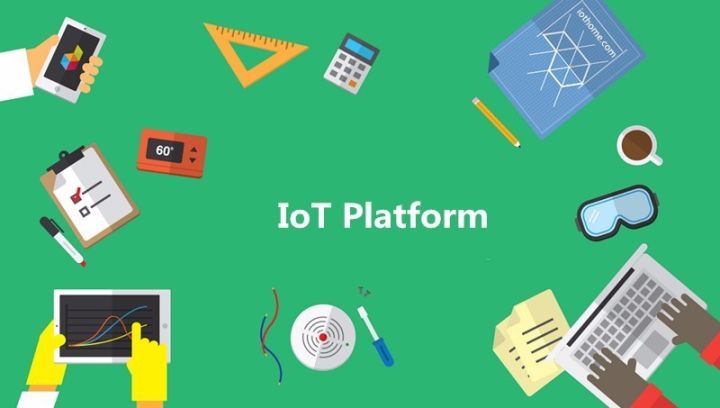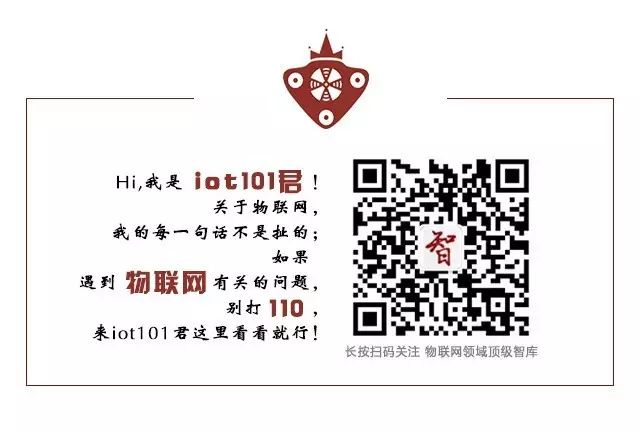
Source: IoT Home
Translator: Winter Night
Published by IoT Think Tank
Please indicate the source when reprinting
—— [Introduction] ——
Although IoT applications are diverse and vary greatly, there are some common points to consider when choosing the best IoT platform.

Despite the great diversity in IoT applications, there are key factors to consider when selecting the best IoT platform. How to choose the best IoT platform? O’Reilly Media states: “I still want to give you a simple answer; like most things, it depends on the specific situation.”
“Each vertical field, such as healthcare, manufacturing, energy, and banking, has specific issues that need to be addressed by IT and OT experts. For example, police and fire departments need a platform to ensure communication between field operations and command centers; energy and transportation companies will look for resilient solutions to protect on-site assets operating in harsh environments; banking platforms will require robust encryption and security features to protect internal and consumer communications and transactions.” —- O’Reilly Media, Evaluating and Choosing IoT Platforms
In other words, there is a significant difference between industrial IoT platforms and consumer IoT platforms. Therefore, it is crucial to understand whether your application belongs to industrial (such as oil and gas, manufacturing, or asset management) or consumer (such as smart home or wearable devices). The needs of industrial IoT platforms and consumer IoT platforms differ significantly. For industrial IoT platforms, system failures can lead to enormous losses, potentially involving millions of dollars or even loss of life; whereas for consumer IoT platforms, failures may only cause inconvenience to the end user. Even within the same industrial or consumer domain, different applications have varying requirements for the platform. Despite the vast differences in IoT applications, there are still some common points to consider when selecting the best IoT platform.

Important considerations when choosing the best IoT platform:1. Platform Stability With so many IoT platforms available, some are likely to fail. It is particularly important to choose platforms that have been operating for many years; otherwise, if the platform provider goes out of business, your investment will be lost. Inquire about the current and past customer experiences with the platform; if they cannot provide this information, it may not be a good choice. 2. Platform Scalability and Flexibility Your needs will change over time, so ensure that the platform can be used when your business starts small and can also scale as your business grows rapidly. In addition to scalability, the platform should also have enough flexibility to adapt to rapidly changing technologies, protocols, or functionalities. Flexible platforms are typically built on open standards and are committed to keeping pace with evolving IoT protocols, standards, and technologies. The platform’s openness to networks is also crucial, meaning it can integrate and collaborate with external critical technologies and systems, rather than being limited to a single vendor. 3. Provider’s Past Work As mentioned, different IoT applications vary greatly. If the platform provider has experience with applications similar to yours, this is a good indicator to measure whether they can meet your specific needs. However, it is important to note that it does not have to be a perfect match. For example, if you are building a smart agriculture application, you might look for a platform that has experience with similar cases, involving hundreds of sensors, the same network connections (such as LPWAN), and data analytics methods, as well as experience in creating shared knowledge. 4. Pricing Model and Your Business Case Ensure that the platform provider has transparent pricing; some platforms may lure businesses with extremely low initial prices or payment methods, only to significantly raise prices when you actually sign the contract. Additionally, how will you purchase? If you are working on a subscription model, paying a subscription fee for IoT platform services is reasonable, and you can include the platform subscription fee in your cost and then package the pricing. However, if you are selling hardware, it may make more sense to look for platforms that offer upfront licensing options, so you can incorporate them into the development costs of your hardware products. 5. How the Platform Provider Handles Security Issues Security is crucial for any IoT system, and the IoT platform must ensure that every aspect is secure. When inquiring about the platform’s security, pay attention to: cloud network security devices, wireless network security for user applications, cloud security, device security (including authentication and up-to-date certificates), application authentication, data encryption, data protection (in storage, during transport, and in the cloud), session initiation security, and specific plans for security updates, including through OTA communication. 6. Time to Market One of the biggest advantages of using an IoT platform is the accelerated time to market for products or services. Ask the platform provider to estimate how long it will take for the product or service to hit the market and what kind of support they intend to provide throughout the process. 7. Data Analysis and Data Ownership The value of IoT lies in data. Data provides reference suggestions for operations or simple daily activities, thereby enhancing efficiency or improving experiences. Additionally, be sure to clarify data ownership. If the answer is vague, such as “you own the data generated by your product,” you should be cautious. Again, the value of IoT lies in data. 8. Does the IoT Platform Provider Care About You? Besides the questions you must understand mentioned above, also pay attention to what questions the platform provider asks you; do they inquire about your budget, timeline, expectations, or cases? Do they seem genuinely sincere? Do they care about you? This is one of the most critical considerations. Because if a platform provider stands in your shoes and cares about whether your project succeeds, they will do more work for you and compensate for any shortcomings of their platform.

Previous Popular Articles (Click the title to read directly):
-
“How Difficult Is It to Make Smart Locks for Shared Bicycles?”
-
“Cognitive Computing, Blockchain IoT, IoT Security… Those Who Understand Will Control the Future”
-
“KUKA, ABB, FANUC, Yaskawa, the Four Industrial Robot Giants Have Long Been Stationed in the IoT Field”
-
“[Heavyweight] IoT Industry Panorama Report, The First Domestic IoT Industry Two-Dimensional Perspective Panorama”
-
“A Cartoon Explains: Besides WiFi and Bluetooth, What Can the Recently Popular NB-IoT Do?”
-
“A Cartoon Explains: Behind NB-IoT, What Is the LoRa Everyone Is Talking About?”
